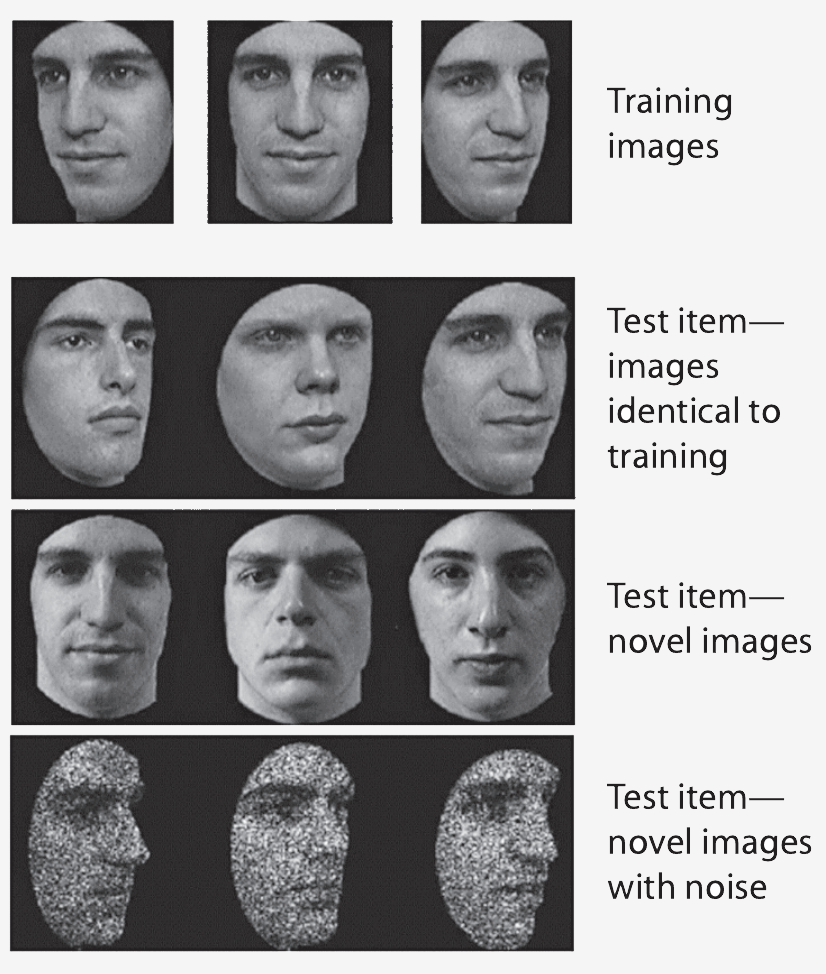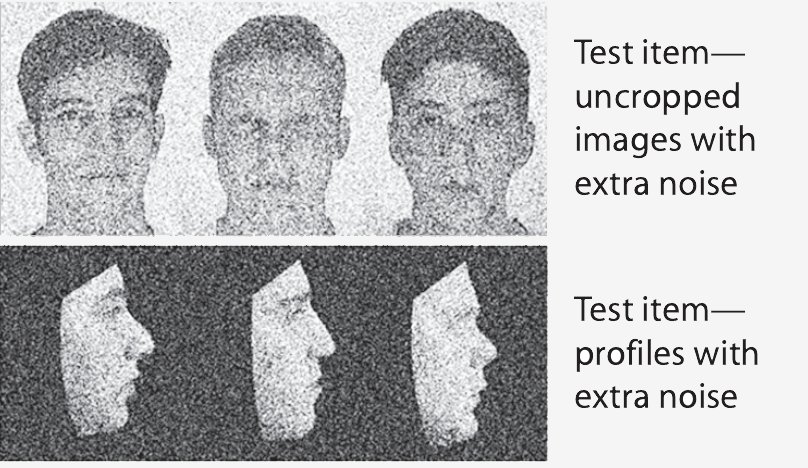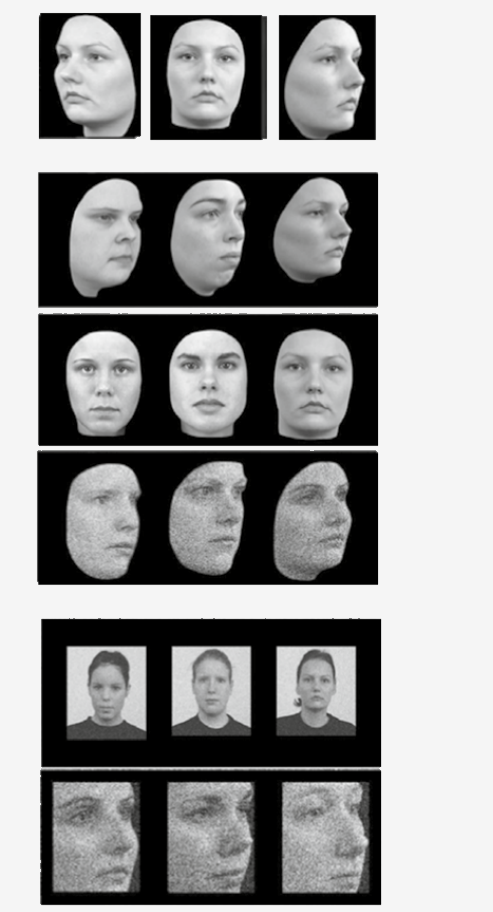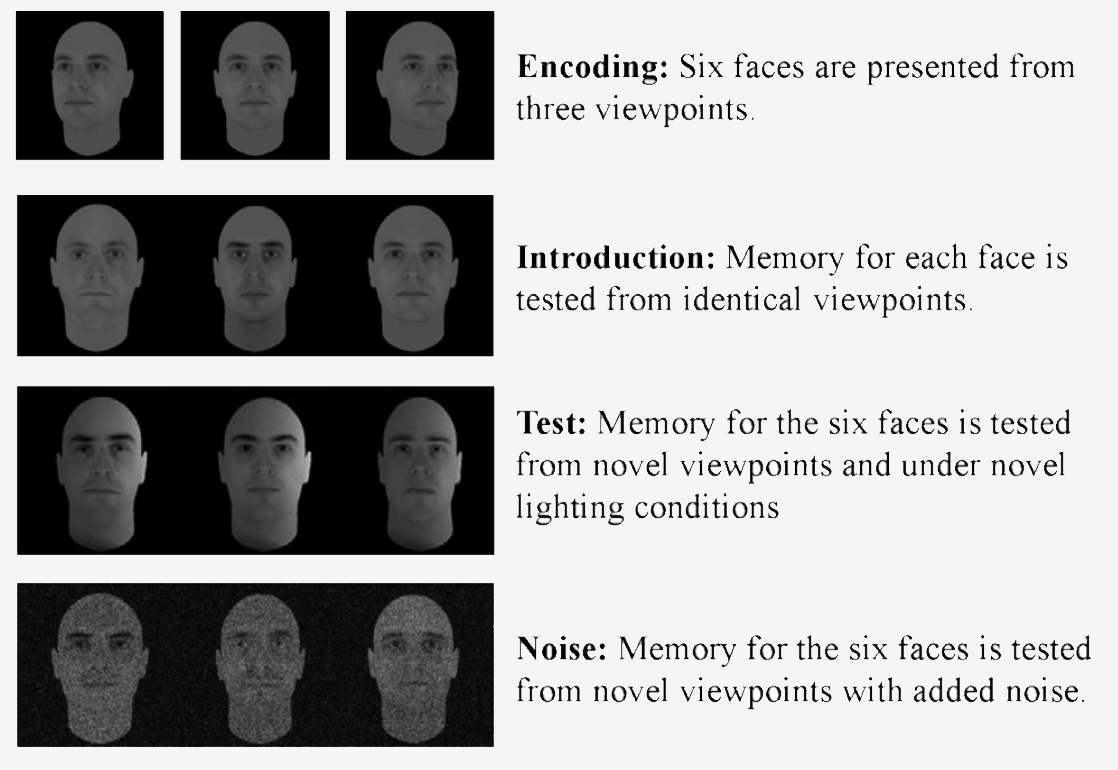Tests of Unfamiliar Facial Identity Memory
Cambridge Face Memory Test*
Brad Duchaine created the CFMT to address the need for a valid and reliable test of unfamiliar face identity recognition and introduced it in Duchaine & Nakayama (2006). The CFMT has 72 test items and takes around 8-10 minutes to complete.
The CFMT is correlated strongly with alternative versions of the CFMT (see below) and the Cambridge Face Perception Test (Bowles et al., 2009). It also correlates surprisingly strongly with famous face tests (Wilmer et al., 2012). In contrast, it is only weakly or moderately correlated with similar tests requiring recognition of non-face stimuli (Dennett et al., 2012; Richler et al., 2017; Wilmer et al., 2010; Wilmer et al., 2012) which indicates the CFMT specifically measures face recognition ability. Results in Wilmer et al. (2010a) and Wilmer et al. (2010b) demonstrated that the CFMT is a reliable measure.
A number of alternative versions of the CFMT have been created that use the same procedure but different sets of faces. (See below)

Citation:
Duchaine, B. & Nakayama, K. (2006). The Cambridge Face Memory Test: Results for neurologically intact individuals and an investigation of its validity using inverted face stimuli and prosopagnosic subjects. Neuropsychologia, 44(4): 576-585.

CFMT - Long Form*
Richard Russell added 30 items to the original CFMT so that it could better identify super recognizers (Russell, Duchaine, & Nakayama, 2009).

Citation:
Russell, R., Duchaine, B., & Nakayama, K. (2009). Super-recognizers: People with extraordinary face recognition ability. Psychonomic Bulletin & Review, 16: 252-257.

CFMT - Chinese*
Jia Liu and his lab created the CFMT-Chinese. Elinor McKone and colleagues have used it in several studies to investigate the other-race effect.

Citation:
McKone, E., Stokes, S., Liu, J., Cohan, S., Fiorentini, C., Pidcock, M., ... & Pelleg, M. (2012). A robust method of measuring other-race and other-ethnicity effects: The Cambridge Face Memory Test format. PLoS One, 7(10), e47956.

CFMT - Australian
Elinor McKone’s lab developed the CFMT-Australian (McKone et al., 2011).

Citation:
McKone, E. , Hall, A., Pidcock, M., Palermo, P., Wilkinson, R.B., Rivolta, D., Yovel, G., Davis, J. M., O'Connor, K.B.L. (2011). Face ethnicity and measurement reliability affect face recognition performance in developmental prosopagnosia: Evidence from the Cambridge Face Memory Test – Australian. Cognitive Neuropsychology, 28(2), 109-146.

Female - CFMT - Long Form*
Myles Arrington and Suzy Scherf created the F-CFMT (Arrington et al., 2022) because all previous tests used male faces. If you’d prefer to have 72 test items rather than 102, you can remove the final 30 items.

Citation:
Arrington, M., Elbich, D., Dai, J., Duchaine, B., & Scherf, K.S. (in press). Introducing the female Cambridge face memory test – long form (F-CFMT+). Behavior Research Methods.

CFMT-2 & CFMT-3
Caitlyn Carey and Laura Germine developed two CFMTs using FaceGen (software for generating faces)(Bate et al., 2014; Wilmer et al., 2010b).

Citation:
Bate, S., Cook, S.J., Duchaine, B., Tree, J.J., Burns, E.J., & Hodgson, T.L. (2014). Intranasal inhalation of oxytocin improves face processing in developmental prosopagnosia. Cortex, 50: 55-63.
